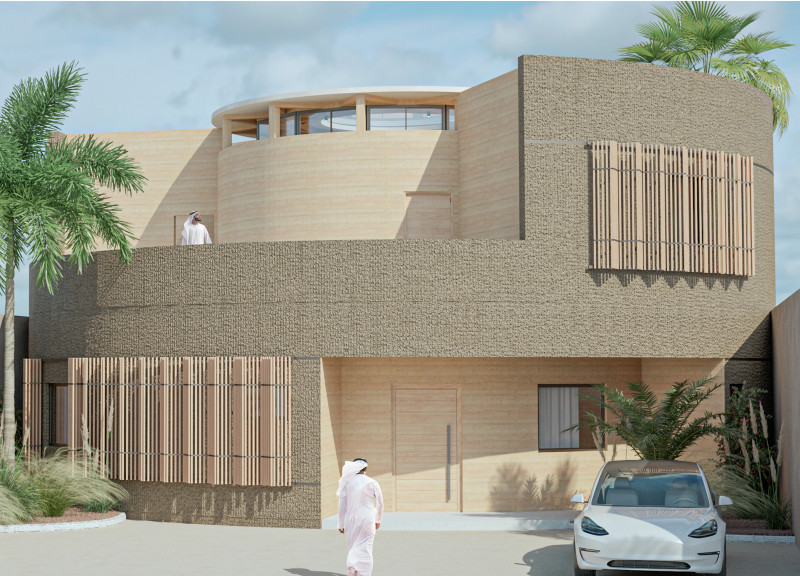5 key facts about this project
The design reflects a harmonious relationship between the building and its surroundings, where careful consideration has been given to the existing landscape. This sensitivity is evident in the way the structure integrates with the natural topography, utilizing existing trees and landforms to create a cohesive visual narrative. Strategically placed openings and orientations optimize natural light and airflow, enhancing the building's environmental performance while providing a comfortable atmosphere for occupants.
A key component of the project is its innovative use of materials, which have been selected not only for their aesthetic appeal but also for their performance characteristics. Concrete serves as the primary structural element, providing the necessary stability while allowing for expansive open spaces inside. Complementing this are expansive glazing systems that blur the boundaries between the interior and exterior, inviting the landscape into the building's core. This transparency promotes an engaging dialogue with the environment and enhances the user experience by creating a strong connection with the outside world.
Wood elements feature prominently, offering warmth and texture to interior spaces. Carefully crafted wooden lattices and panels create a welcoming and approachable ambiance, while also serving functional purposes such as providing acoustic treatment. This understanding of materiality reflects a commitment to sustainability, as many materials are locally sourced, minimizing the project's carbon footprint. The architecture does not shy away from utilizing steel components; these elements provide structural reinforcement, allowing for innovative spatial configurations that emphasize openness and flexibility.
The architectural design embodies a unique approach by focusing on user-centric spatial organization. Areas are thoughtfully arranged to encourage interaction and adaptability, allowing for a variety of configurations that can accommodate diverse events and activities. This flexibility is a defining characteristic of the project, making it a valuable asset to the community. Outdoor spaces are also an integral part of the design, featuring landscaped gardens that promote relaxation and social engagement, further enhancing the sense of community.
Aesthetic considerations are well balanced with functionality throughout the design. The facade showcases a contemporary expression that integrates traditional materials in a novel way. This blend of old and new reflects the cultural heritage of the area while ensuring the architecture remains relevant to contemporary users. Design elements are not merely decorative but serve to enhance the user's experience, creating pathways that guide visitors through the space in an intuitive manner.
As readers explore the presentation of this architectural project, they are encouraged to delve into the architectural plans and sections that illustrate the structural and spatial intricacies of the design. Understanding the architectural ideas behind this project provides deeper insights into how each element contributes to the overall vision. This project exemplifies how architecture can serve a community by fostering connections among its members, enhancing their everyday lives, and paying homage to the environment it inhabits. For further details regarding the architectural designs and how they interact with the site, a closer examination of the presentation materials is highly recommended.


























